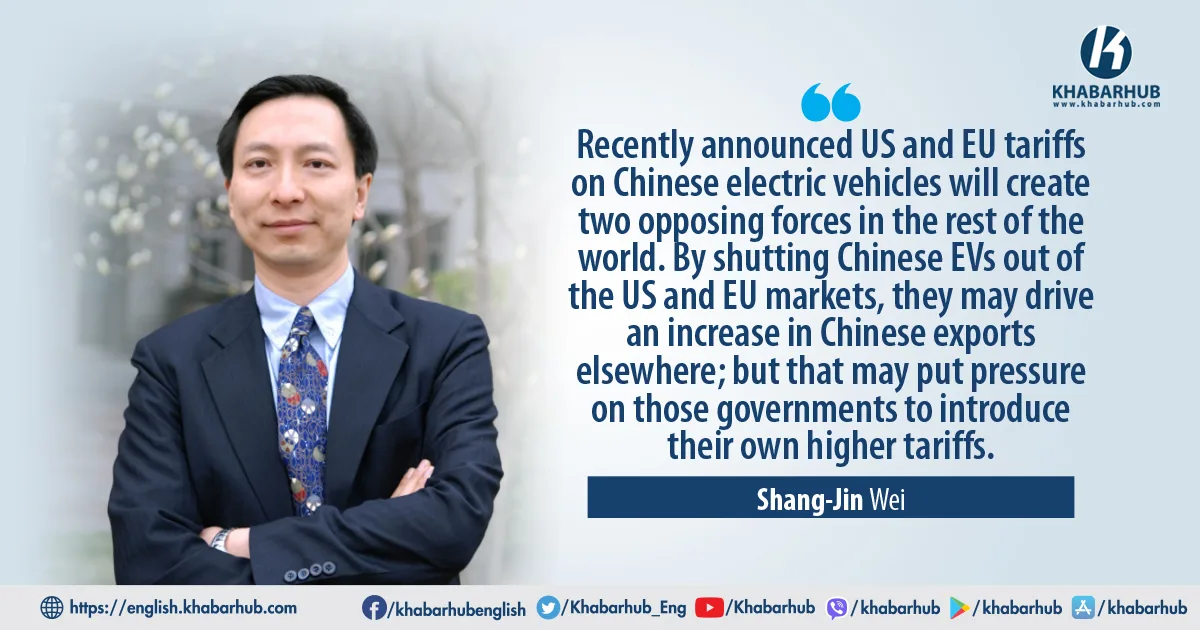On June 12, the European Union announced new provisional levies on Chinese electric vehicles (EVs), with the tariff level to be based on estimates of how much state support an EV exporter receives.
The new tariffs follow from a months-long investigation into China’s use of financial subsidies, and they will be imposed on top of the 10% tariff that the EU already has in place.
They are “provisional” because they might be revised downward if Chinese producers can offer evidence that the support they receive is less than estimated.
Separately, if the EU can reach an agreement with China to reduce the volume of Chinese EV exports to Europe, the new tariffs may not be implemented.
The new tariffs reflect the EU’s upper-bound estimate of the total subsidy per vehicle that Chinese producers receive from all levels of government throughout their supply chains.
The investigators sent requests for cooperation to all Chinese EV producers, and selected three from among those who complied: BYD, Geely, and SAIC.
They then pored over those companies’ records and interviewed company insiders and industry experts.
Some commentators seem to believe that since China’s cost advantage is so large, a 30% tariff is not enough to curtail Chinese EV exports. But this assumption is mistaken for at least two reasons.
Concluding that the rates of subsidies are 17.4% at BYD, 20% at Geely, and 38.1% at SAIC, the investigators set tariffs on each company accordingly.
All other EV producers who agreed to cooperate with investigators will face a tariff of 21% (the weighted average of the three), while producers who have not pledged cooperation will be subject to a 38.1% tariff.
The EU’s findings provide insight into the true nature of the United States’ 100% “anti-subsidy” tariff on Chinese EVs. The US tariff, announced last month (with no serious investigation), is so much higher than any reasonable estimate of Chinese subsidies that its protectionist intent is obvious.
Even before President Joe Biden’s administration imposed the 100% levy on Chinese EVs, US tariffs on Chinese imports – erected under Donald Trump, but carried over by Biden – were already at levels similar to the infamous US Smoot-Hawley tariffs of the 1930s. In 2020, a World Trade Organization panel (consisting of experts from countries other than the US and China) ruled that these tariffs are inconsistent with US legal obligations at the WTO. But both the Trump and Biden administrations have chosen to ignore WTO rules.
Most governments have said nothing publicly about the US policy, partly because the tariffs have raised the relative competitiveness of their own products in the same market (by dint of reducing Chinese producers’ competitiveness).
The EU and US probably prefer tariffs on foreign goods to subsidies on domestic EV production because both are already burdened by high levels of debt.
Following the Trump tariffs, direct US imports from China declined precipitously, while imports from Mexico, India, Vietnam, and many other countries increased.
Some commentators seem to believe that since China’s cost advantage is so large, a 30% tariff is not enough to curtail Chinese EV exports. But this assumption is mistaken for at least two reasons.
First, because different markets have different standards for safety and other matters, auto producers often must adjust car designs accordingly, and this reduces the number of sales per model in a given market.
(For example, Chinese standards emphasize the safety of pedestrians and others outside a vehicle in the event of a collision, whereas the US standard emphasizes the safety of the driver and others inside the car.)
Second, any given model needs to reach a certain threshold of sales volume to be profitable.
Thus, any tariff that can reduce the expected quantity of sales sufficiently could remove the incentive for exporting to that foreign market altogether.
Some Chinese EV producers might consider locating production in the US, which could be good for US job creation and tax revenues.
But since the US government review of inbound foreign investment is perceived to be anti-China by Chinese firms, many producers may simply give up on the US market entirely.
The world would have been much better off if major powers had found a way to negotiate a common pro-climate subsidy scheme for EVs, and a common tax on carbon emissions. Instead, we may get a self-destructive race to the bottom.
The primary victims of the US tariffs (besides Chinese exporters and American consumers) are producers from smaller countries that now face an elevated risk of larger countries imposing protectionist measures with seeming impunity.
As EVs are an important tool in the world’s transition to a net-zero economy, some subsidies are better than none.
A globally efficient subsidy rate for EV production and consumption is higher in the absence of a sufficiently high global carbon tax.
The EU and US probably prefer tariffs on foreign goods to subsidies on domestic EV production because both are already burdened by high levels of debt.
The new tariffs will certainly harm Chinese EV manufacturers’ prospects, in terms of both profits and jobs.
But they are also bad for European and American households, because they will raise prices (domestic producers will face less competitive pressure) and delay the transition from highly polluting traditional automobiles.
At the same time, the new tariffs will create two opposing forces in the rest of the world.
By shutting Chinese EVs out of the US and EU markets, they may drive an increase in Chinese exports elsewhere.
That will benefit consumers in these countries, and ease their transition to cleaner transportation.
Among countries with small domestic auto industries, such as Australia and New Zealand, there are no obvious losers. But for countries with a sizable auto industry, there will be even greater competitive pressure, and these governments may feel compelled to imitate the US and the EU.
The world would have been much better off if major powers had found a way to negotiate a common pro-climate subsidy scheme for EVs, and a common tax on carbon emissions. Instead, we may get a self-destructive race to the bottom.
(Shang-Jin Wei, a former chief economist at the Asian Development Bank, is Professor of Finance and Economics at Columbia Business School and Columbia University’s School of International and Public Affairs)
Copyright: Project Syndicate









Comment